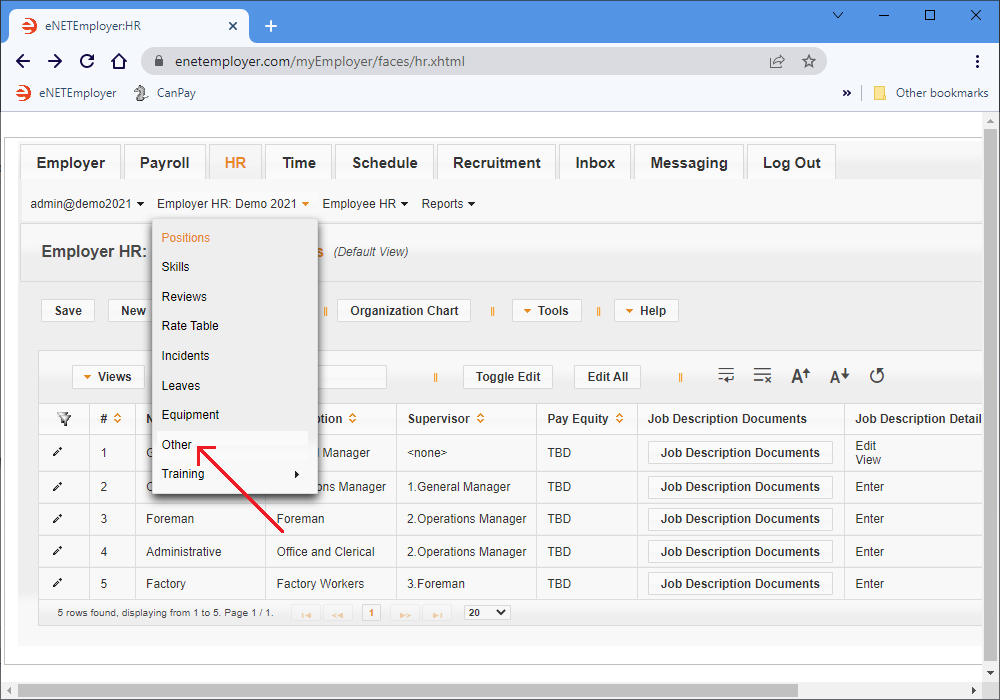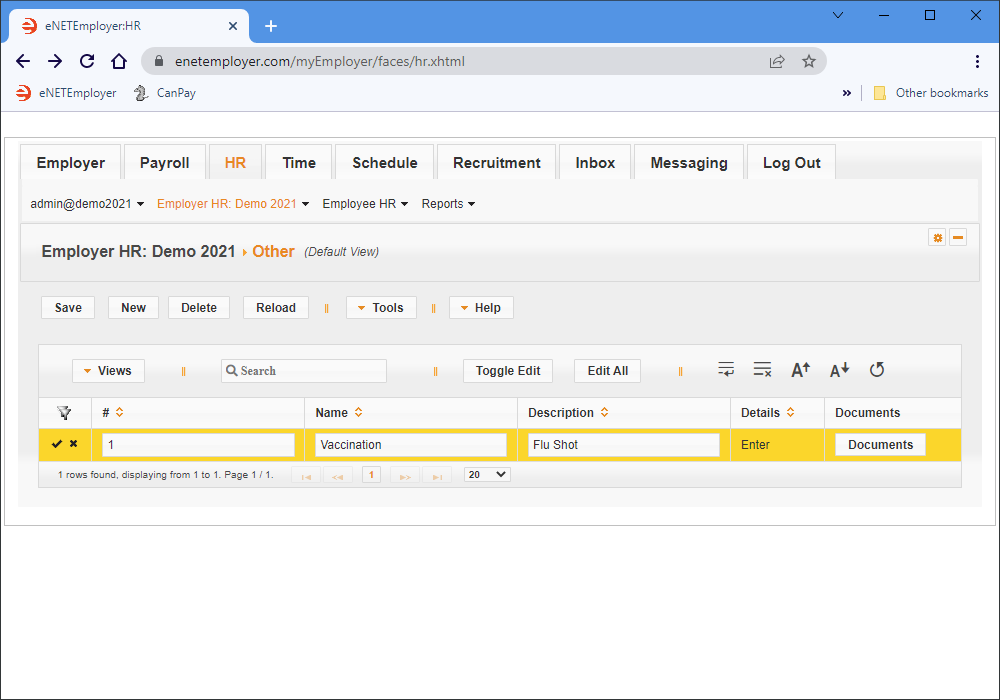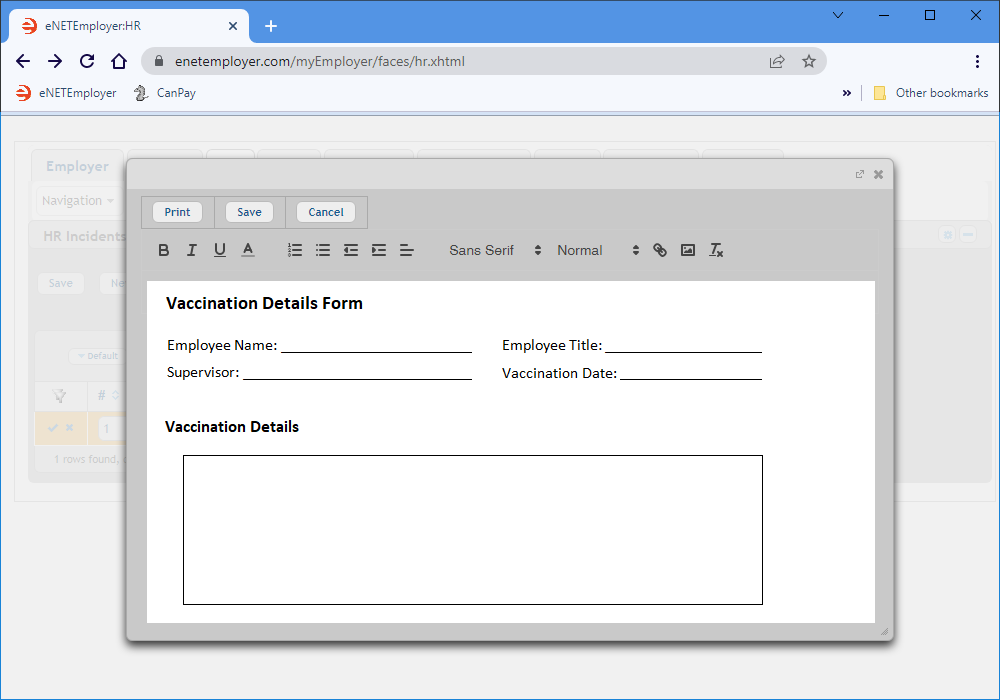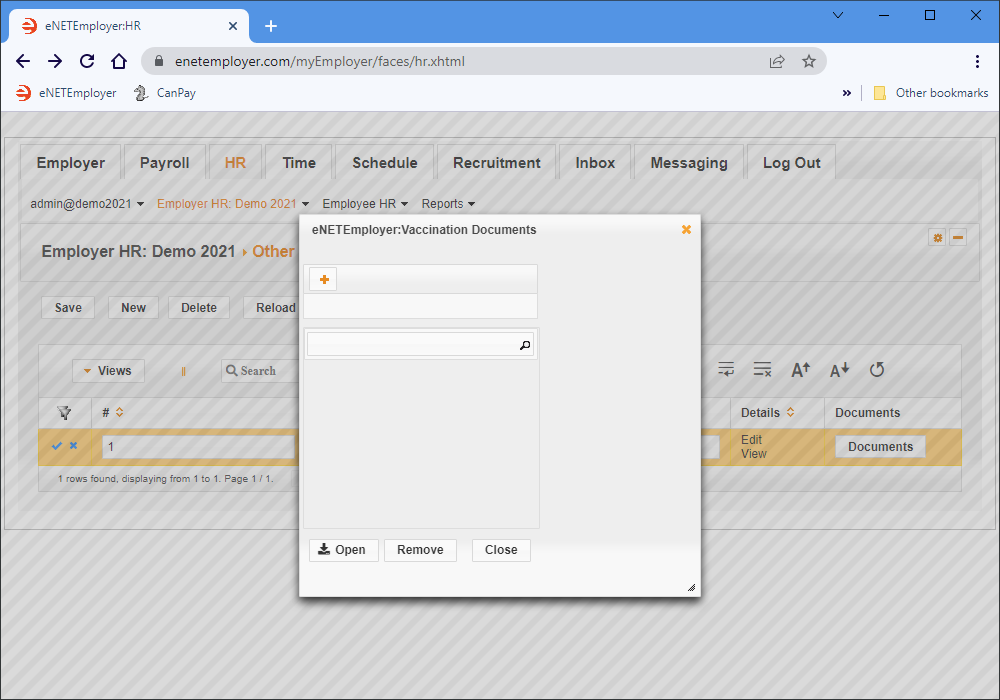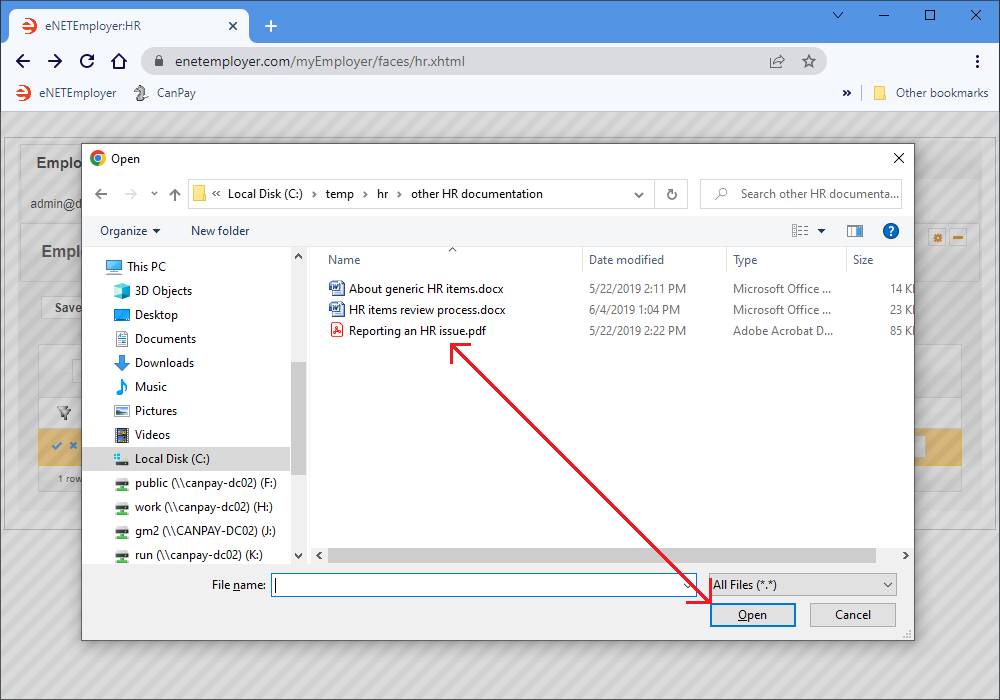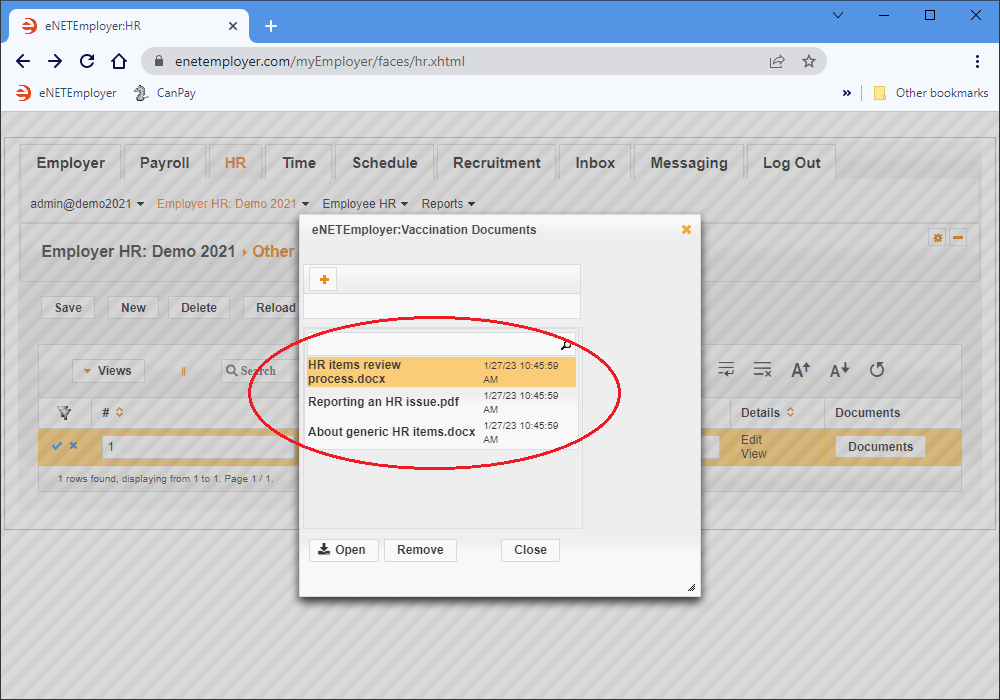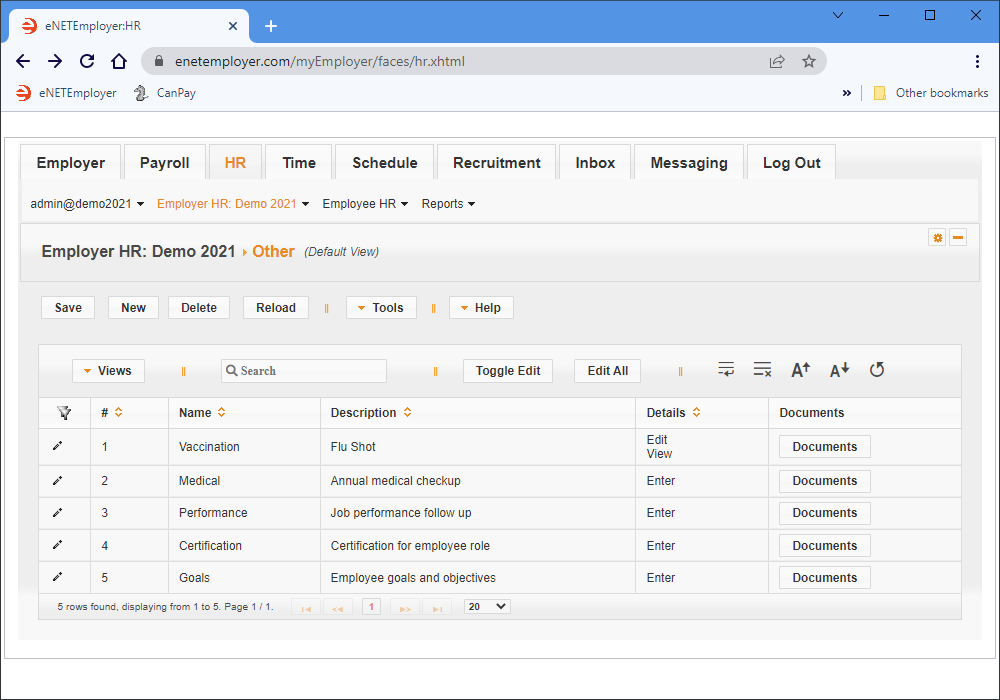Help Toolbar (select a button to browse other online help sections) Home Tutorials Resources Search Tabs & Menus Button Bar Table & Data Display |
Create an Other (Custom) HR Item
This tutorial will show you how to create "other" (custom) HR items - items that do not fall into the standard set of categories that are already offered in eNETEmployer. Examples of custom HR items could be certifications, safety performance, job goals, vaccinations, accessibility/medical issues, or any other human resource issue.
NOTE: Click on the images below to view them at full size
To Add an Other (Custom) HR Item:
- Click on the HR tab and then choose the Employer HR menu to display the various options.
- Choose the Other menu option. This opens the Other screen that is used to define custom HR items.
- Choose the New button to insert a blank row in the table.
- Use the Name cell to enter a descriptive name for the HR item and then move to the Description cell and enter a brief description.
Example: In Fig. 02 below, we have created an HR item type entitled "Vaccination". This custom HR item type can be applied to all employees who are scheduled to receive (or have received) a vaccination. - Move to the Details cell and click on the Enter hyperlink. This opens a window that allows you to enter detailed information about the vaccination item.
- Enter the details as needed. You can use the formatting bar to change the font size, color, etc. You can also paste content into the window from another program or document (e.g. word processor, spreadsheet, web page).
Example: In Fig. 03 below, we have entered an vaccination "template" form that can be filled in each time an employee receives this type of vaccination. - When the details are complete, choose the Save button to close the pop-up window. This returns you to the main screen where the cell's original hyperlink has been replaced with the word "Edit" to indicate that you can perform further changes to the details when needed.
- Select the Documents button to open a window where you can attach documents and files that pertain to the current HR item. This can include PDFs, word processing documents, spreadsheets and images.
- When the Documents window appears, select the "+" (plus sign) icon to display the Open dialog box, and then use this window to navigate to the location of the document(s) that you wish to add.
Example: In our example below, we see several documents that relate to our incident type. - Select one or more documents as needed, and then choose the Open button. This adds the selected document(s) to the eNETEmployer Documents window.
- Select the Close button to exit the Documents window.
- Choose the Save icon (the Check Mark icon at the left side of the row) to accept your changes. This action saves the changes for the row and takes you out of Edit Mode.
- Repeat the preceding steps to enter additional HR items.
Example: In Fig. 07 below, we have created a total of five custom HR items that can be assigned to our employees as needed.
Employer HR - Other Help page...
This completes the tutorial on adding custom HR items.
To learn how to assign these HR items to your individual employees, refer to the Managing Other (Custom) Employee HR Items tutorial.
See Also:
